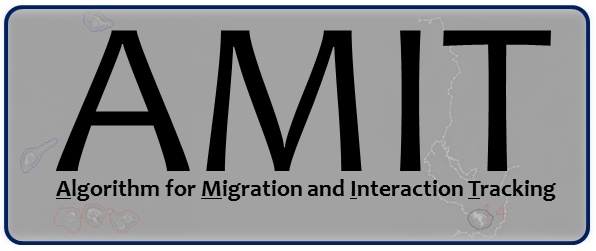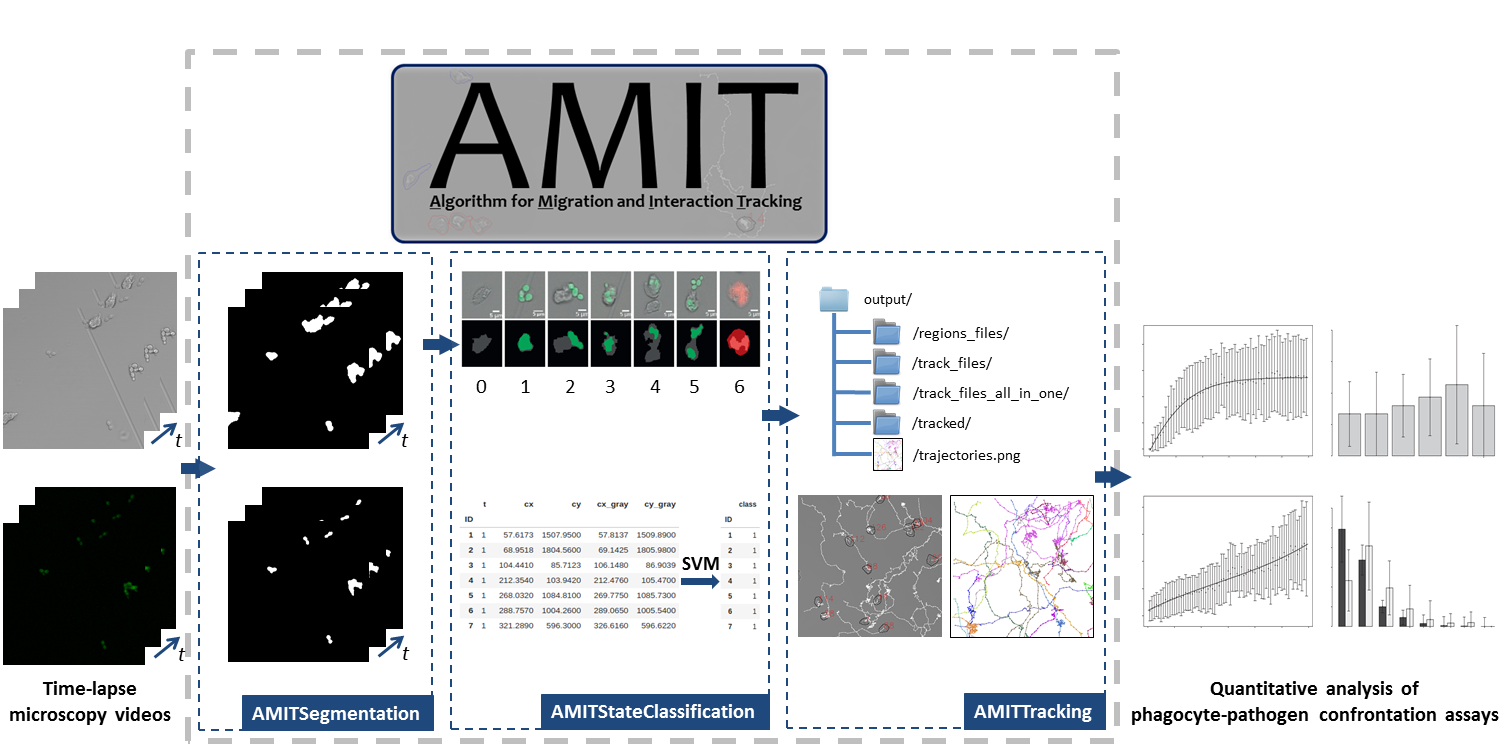
The algorithm for migration and interaction tracking (AMIT) framework enables a high-performance analysis based on a machine-oriented programming implementation in C++.
The high-throughput analysis is designed in particular for time-resolved microscopy data, where processing itself can be parallized depending on the available hardware. The output of AMIT can then be used for a wide variety of quantitative analyses using a diverse range of cell types.
Experimental Collaborators
- Fungal Septomics group at the Leibniz-HKI in Jena, Germany
Features are
- segmentation for label-free cells which is capable of precisely detecting all cell membranes at a wide range of contrast ratios
- a nearest-neighbor-associated tracking system capable of detecting and splitting time-resolved cell clusters by a fusion-and-fission algorithm
The image analysis capabilites are provided via the popular OpenCV library.
Parameters for all components of the framework can be adjusted in a user-friendly way via a json interface.

Compontens of the algorithm
This framework enables the segmentation, classification and tracking of time–resolved migration and confrontation assays to obtain quantitative data by tracking unit. Each component can also be applied individually and independently to a wide variety of data.





